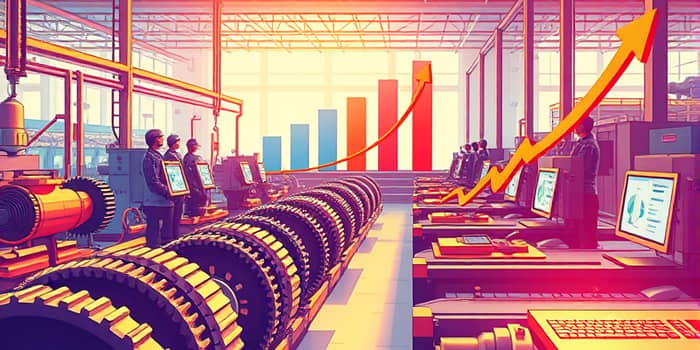
The latest PMI data from S&P Global and ISM paints a nuanced picture of US manufacturing in June 2025: modest growth underpinned by strong domestic demand but tempered by rising costs and weak exports.
In June 2025, the S&P Global US Manufacturing PMI rose to 52.9, marking the fourth straight month above the 50 threshold and signaling steady manufacturing expansion since March. This uptick exceeded expectations and underscored resilient output and new orders.
Conversely, the ISM Manufacturing PMI registered 49.0, climbing from 48.5 in May but remaining below the 50-mark that separates expansion from contraction. Though still contracting, the pace of decline is slowing, offering a glimmer of stabilization in the sector.
Domestic demand emerged as the primary growth engine in S&P data. Companies reported new orders supported by local businesses, benefitting from customers who shifted procurement strategies toward domestic suppliers amid supply chain uncertainties.
Output also returned to marginal growth after several months of contraction, reflecting increased factory utilization and more predictable raw material deliveries. Supplier deliveries continued to slow, a typical sign of lingering bottlenecks even as demand steadies.
Despite expansion signals, manufacturing faces several formidable obstacles. Export demand has weakened notably, export orders have been contracting for consecutive months as tariffs and global economic slowdown weigh on foreign buyers.
Employment remains under pressure. Both S&P and ISM surveys reported job cuts for the first time since late 2024, with ISM’s employment sub-index at 46.8. Firms are cautious about hiring amid uneven demand and cost challenges.
Input costs are climbing at their fastest pace since August 2022, driven by tariffs, a weaker dollar, and ongoing supply disruptions. S&P data highlighted a 29-month high in output price inflation, while ISM recorded a prices-paid reading of 69.4 in May.
Rising costs are squeezing margins and leading firms to pass on expenses to customers wherever possible. However, higher output prices risk dampening demand, particularly from price-sensitive buyers both domestically and abroad.
Inventories moved into contraction territory in May, suggesting companies are drawing down stockpiles after building buffers during earlier supply shocks. This destocking may contribute to renewed production in the short term but also raises concerns about readiness for demand upticks.
Supplier delivery delays persist, reflecting ongoing capacity constraints and logistical hurdles. Though slower deliveries often accompany rising demand, the current pattern more strongly indicates residual supply chain friction than robust order backlogs.
Business confidence in manufacturing has dipped to its lowest level since August 2024 (S&P) and December 2024 (ISM). Survey respondents cited concerns over rising input costs and supply shortages, as well as slower economic growth and weak export demand.
Manufacturers are increasingly cautious about investing in new capacity or workforce expansions, uncertain whether recent improvement in headline PMI readings signals a sustainable upturn or a fleeting respite.
Compared to historic averages, the S&P reading of 52.9 sits modestly above the long-term trend around 50.5, indicating tepid growth rather than a robust boom. The divergence with ISM’s sub-50 print underscores regional or methodological differences in survey panels and the uneven nature of the recovery.
For policymakers, the mixed signals complicate assessments of manufacturing’s contribution to overall GDP and inflation. Rising output prices feed broader consumer price pressures, while employment cuts could soften labor market tightness over time.
The PMI readings underscore a manufacturing sector in modest but sustained growth territory according to S&P Global, while ISM’s metrics point to a cautious contraction that is gradually easing.
Domestic demand and a rebalancing of supply chains offer hope for continued expansion, but persistent cost inflation, weak export markets, and cautious business sentiment serve as potential brakes on momentum. Monitoring these dynamics will be crucial for stakeholders gauging the sector’s trajectory and its broader impact on the US economy.
References













